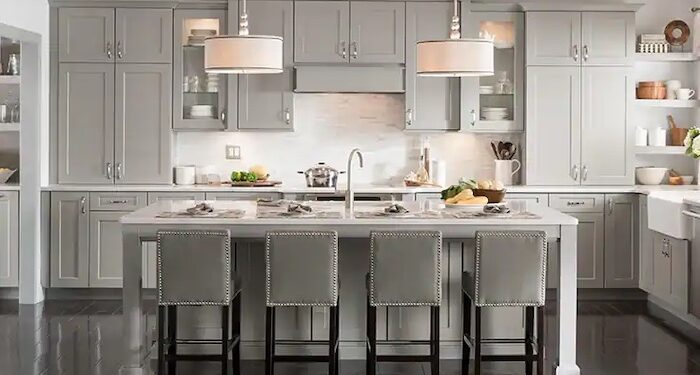The choice of a kitchen faucet should be approached with all responsibility, armed with basic knowledge and having a clear understanding of what exactly you want to get from it. There are many different designs, with varying degrees of functionality and transformation, but there are a few general points, based on which you can choose a kitchen faucet that best meets your expectations and is suitable for the price.
Usually they start with a valve, since it is traditional and has a long history, is familiar to many and is somewhat cheaper in cost. Two valves meteredly supply cold and hot water to the mixer in proportions set by the user. Simplicity of design and maintainability attract, but the need to constantly adjust the desired water temperature is often annoying.
On the other hand, there is a one -legged system that offers its own version of mixing water: having adjusted the desired temperature, you can close and open the crane as necessary – this is not only much more convenient, but also significantly saves water, which is also very important, in t.h. and for the payback of a single -leaf mixer, which is usually a little more than a valve.
Contactless mixers equipped with touch sensors are even more convenient: he brought his hands to the cranes – the water flows, removed – the stream stopped. However, the cost of such rather complex systems is large and inaccessible to most buyers.
The shape and height of the excuse (the people are often called “husak”) can also significantly simplify the life of the hostess, or vice versa – complicate. Manufacturers offer models with spouts that differ in height, shape and design: there are swivel and fixed spouts, higher and lower, solid and retractable. Keep in mind that a spout that is too high can splash water, and one that is too low makes it difficult (or even impossible) to wash large dishes; sometimes it happens that you need to turn the tap to the side, and it’s so good if the design allows it; an expensive pleasure – a retractable spout with a margin of flexible hose length (from 0.6 to 1.2 m), which is convenient to draw water into a separate dish and do a lot of other important things.
Different models also differ in the material of manufacture and type of coating. Faucets made of metal and with ceramic internal “stuffing” are recognized as the best. Cheap models are mainly short-lived silumin; those that are more expensive are brass-bronze alloys; ceramics are good, but have a certain fragility, and plastic, and even granite, are more exotic than practical.
The most practical is the coating of metal parts of the kitchen faucet with chrome plating, as well as stainless steel as a material for manufacturing: yes, they are more visible from dried water, but more spectacular enameled faucets are subject to various chips and cracks.















